 [An earlier version of this article was originally published by Jennifer Cohn at Medium. She joined me on The BradCast to discuss it. - BF]
[An earlier version of this article was originally published by Jennifer Cohn at Medium. She joined me on The BradCast to discuss it. - BF]
A Ballot Marking Device ("BMD") is a touchscreen computer that generates a computer-marked paper ballot or printout, which is then tallied on a computerized optical scanner. (Those computer-marked ballots can also, in theory, be counted by hand, but generally are not, as most election officials rely on optical scanners instead.)
BMDs were initially designed for people who are unable to hand-mark paper ballots due to disability, old age, etc. But the state of Georgia and Los Angeles County, California are now at the forefront of an unfortunate new trend, which is to consider buying these expensive hackable "electronic pencils" for use by all voters at the polls, regardless of need.
The Georgia legislature is quickly working to adopt a bill to fund such new systems to replace their similarly 100% unverifiable, 15-year old Diebold touchscreen systems used across the entire state. L.A. County is in the late process of a years-long development program to deploy these systems in time for the 2020 Presidential election.
Should Georgia and Los Angeles proceed on their current course, it would introduce a second unnecessary and insecure computer system in the polling place above and beyond already insecure optical scanners, creating twice as many opportunities for electronic programming errors, paper jams, and hacking. For example, some BMD systems have already had problems with:
- Vote flipping (when election integrity advocate and journalist Brad Friedman used such a device in Los Angeles in a 2008 election, the device flipped 4 out of 12 of his selections on the computer-marked paper ballot);
- Inability to display all candidates on one screen (a problem reported by the state of Maryland, which had acquired such systems for all voters, but changed its mind even though the screen problem was eventually fixed); and
- Vendor breach of certification requirements (as occurred with vendor Election Systems & Software, "ES&S", the nation's largest voting system vendor).
Meanwhile, two of the most popular BMD's --- the ES&S ExpressVote and the Dominion ImageCast --- produce bar-coded (or QR-coded) printouts, which cannot be read by human beings, in lieu of traditional, hand-marked paper ballots.
This is alarming, according to experts --- including some who describe BMDs as "Son of DREs" --- for a number reasons...


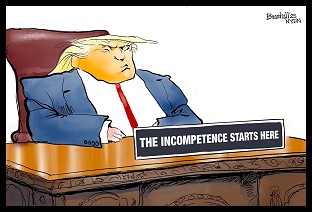 Sunday 'Great Start!' Toons
Sunday 'Great Start!' Toons Vets Push Back at Trump, Musk Plan to Slash Health Care, 80K V.A. Jobs: 'BradCast' 3/27/25
Vets Push Back at Trump, Musk Plan to Slash Health Care, 80K V.A. Jobs: 'BradCast' 3/27/25 'Green News Report' 3/27/25
'Green News Report' 3/27/25
 Signal Scandal Worsens for Trump, GOP; Big Dem Election Wins in PA: 'BradCast' 3/26
Signal Scandal Worsens for Trump, GOP; Big Dem Election Wins in PA: 'BradCast' 3/26 'Emptywheel' on Why Trump NatSec Team Should 'Resign in Disgrace' After Signal Chat Debacle: 'BradCast' 3/25/25
'Emptywheel' on Why Trump NatSec Team Should 'Resign in Disgrace' After Signal Chat Debacle: 'BradCast' 3/25/25 'Green News Report' 3/25/25
'Green News Report' 3/25/25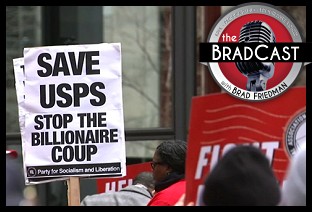 USPS 'Belongs to the People, Not the Billionaires': 'BradCast' 3/24/25
USPS 'Belongs to the People, Not the Billionaires': 'BradCast' 3/24/25 Sunday 'Suddenly Conceivable' Toons
Sunday 'Suddenly Conceivable' Toons 'Green News Report' 3/20/25
'Green News Report' 3/20/25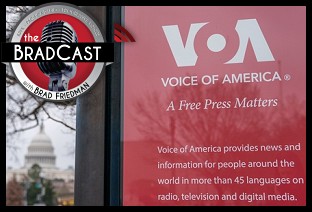 We're ALL Voice of America Now: 'BradCast' 3/20/25
We're ALL Voice of America Now: 'BradCast' 3/20/25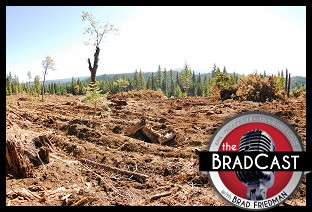 What Trump's 'Timber Production Expansion' Means (and Costs): 'BradCast' 3/19/25
What Trump's 'Timber Production Expansion' Means (and Costs): 'BradCast' 3/19/25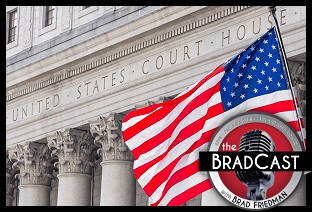 Courts Largely Holding Against Trump, Musk Lawlessness: 'BradCast' 3/18/25
Courts Largely Holding Against Trump, Musk Lawlessness: 'BradCast' 3/18/25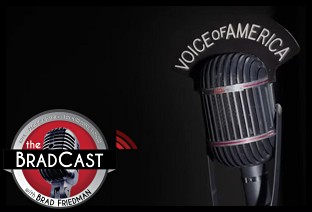 Chief VOA Reporter on Outlet Falling Silent First Time Since 1942: 'BradCast' 3/17/25
Chief VOA Reporter on Outlet Falling Silent First Time Since 1942: 'BradCast' 3/17/25 Trump EPA Unveils Plans to Endanger, Sicken Americans: 'BradCast' 3/13/25
Trump EPA Unveils Plans to Endanger, Sicken Americans: 'BradCast' 3/13/25 Trump Nixed Enforce-ment Against 100 Corp. Lawbreakers: 'BradCast' 3/12/25
Trump Nixed Enforce-ment Against 100 Corp. Lawbreakers: 'BradCast' 3/12/25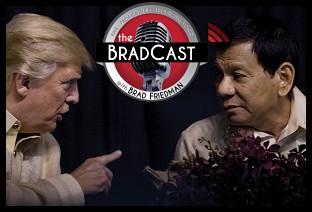 Bad Day for 'Strongmen': 'BradCast' 3/11
Bad Day for 'Strongmen': 'BradCast' 3/11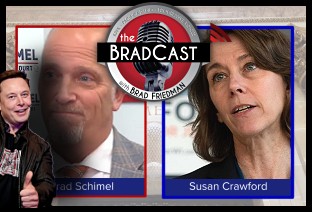 WI Election Could Flip Supreme Court Control, Musk Jumps In: 'BradCast' 3/10
WI Election Could Flip Supreme Court Control, Musk Jumps In: 'BradCast' 3/10
 VA GOP VOTER REG FRAUDSTER OFF HOOK
VA GOP VOTER REG FRAUDSTER OFF HOOK Criminal GOP Voter Registration Fraud Probe Expanding in VA
Criminal GOP Voter Registration Fraud Probe Expanding in VA DOJ PROBE SOUGHT AFTER VA ARREST
DOJ PROBE SOUGHT AFTER VA ARREST Arrest in VA: GOP Voter Reg Scandal Widens
Arrest in VA: GOP Voter Reg Scandal Widens ALL TOGETHER: ROVE, SPROUL, KOCHS, RNC
ALL TOGETHER: ROVE, SPROUL, KOCHS, RNC LATimes: RNC's 'Fired' Sproul Working for Repubs in 'as Many as 30 States'
LATimes: RNC's 'Fired' Sproul Working for Repubs in 'as Many as 30 States' 'Fired' Sproul Group 'Cloned', Still Working for Republicans in At Least 10 States
'Fired' Sproul Group 'Cloned', Still Working for Republicans in At Least 10 States FINALLY: FOX ON GOP REG FRAUD SCANDAL
FINALLY: FOX ON GOP REG FRAUD SCANDAL COLORADO FOLLOWS FLORIDA WITH GOP CRIMINAL INVESTIGATION
COLORADO FOLLOWS FLORIDA WITH GOP CRIMINAL INVESTIGATION CRIMINAL PROBE LAUNCHED INTO GOP VOTER REGISTRATION FRAUD SCANDAL IN FL
CRIMINAL PROBE LAUNCHED INTO GOP VOTER REGISTRATION FRAUD SCANDAL IN FL Brad Breaks PA Photo ID & GOP Registration Fraud Scandal News on Hartmann TV
Brad Breaks PA Photo ID & GOP Registration Fraud Scandal News on Hartmann TV  CAUGHT ON TAPE: COORDINATED NATIONWIDE GOP VOTER REG SCAM
CAUGHT ON TAPE: COORDINATED NATIONWIDE GOP VOTER REG SCAM CRIMINAL ELECTION FRAUD COMPLAINT FILED AGAINST GOP 'FRAUD' FIRM
CRIMINAL ELECTION FRAUD COMPLAINT FILED AGAINST GOP 'FRAUD' FIRM RICK SCOTT GETS ROLLED IN GOP REGISTRATION FRAUD SCANDAL
RICK SCOTT GETS ROLLED IN GOP REGISTRATION FRAUD SCANDAL VIDEO: Brad Breaks GOP Reg Fraud Scandal on Hartmann TV
VIDEO: Brad Breaks GOP Reg Fraud Scandal on Hartmann TV RNC FIRES NATIONAL VOTER REGISTRATION FIRM FOR FRAUD
RNC FIRES NATIONAL VOTER REGISTRATION FIRM FOR FRAUD EXCLUSIVE: Intvw w/ FL Official Who First Discovered GOP Reg Fraud
EXCLUSIVE: Intvw w/ FL Official Who First Discovered GOP Reg Fraud GOP REGISTRATION FRAUD FOUND IN FL
GOP REGISTRATION FRAUD FOUND IN FL



















 Our elections are under attack. Intelligence officials concur that Russia plans to target the 2018 midterm elections.[1] One hundred experts in the fields of computer science and statistics have recommended paper ballots and post-election statistical audits to protect our democracy.[2] But some election officials have undermined efforts to implement these security measures with irresponsible and false assurances that it would be difficult for hackers to alter the outcome of a national election under our current system.[3]
Our elections are under attack. Intelligence officials concur that Russia plans to target the 2018 midterm elections.[1] One hundred experts in the fields of computer science and statistics have recommended paper ballots and post-election statistical audits to protect our democracy.[2] But some election officials have undermined efforts to implement these security measures with irresponsible and false assurances that it would be difficult for hackers to alter the outcome of a national election under our current system.[3]













